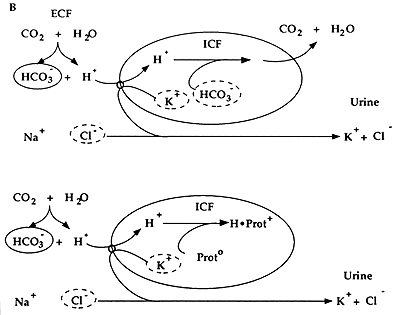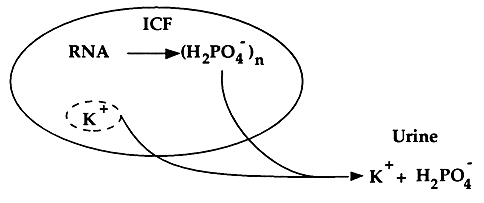

Fig. 4: Figs. 4 to 6 show the effect of potassium excretion on body tonicity. Ions in the dashed circles are lost, whereas ions in the solid circles are gained. Chloride and sodium ions are lost from the extracellular fluid (ECF); the sodium enters the intracellular fluid (ICF) and replaces potassium ions in cells. Therefore, the urinary excretion of 1 milliosmole of potassium represents the loss of 2 milliosmoles from the ECF in this example.

Fig. 5: Chloride ions are replaced by bicarbonate ions added to the ECF. In the top portion of this panel, another bicarbonate ion is consumed in the ICF due to buffering of a hydrogen ion that enters the ICF. The urinary excretion of 1 mmol of potassium chloride represents the loss of 2 mmol from the ICF. In the lower portion, if bicarbonate ions do not disappear from the ICF (that is, if hydrogen ions were buffered by proteins in the ICF), then potassium excretion represents the loss of 1 mmol from the ICF.

Fig. 6: Potassium phosphate, derived from an intracellular macromolecule such as RNA and the loss of potassium plus phosphate, accounts for a net loss of 1 milliosmole from the ICF.